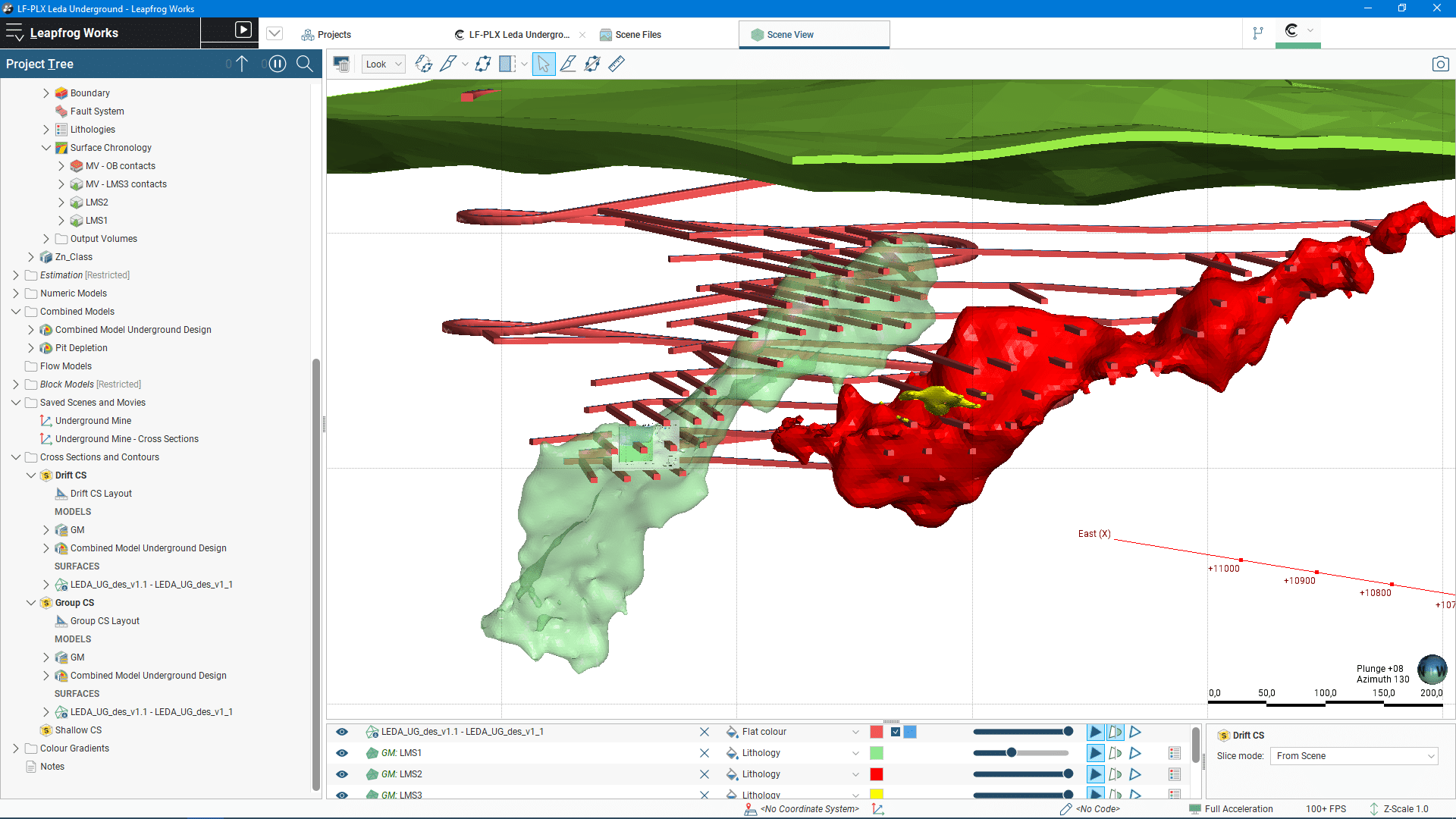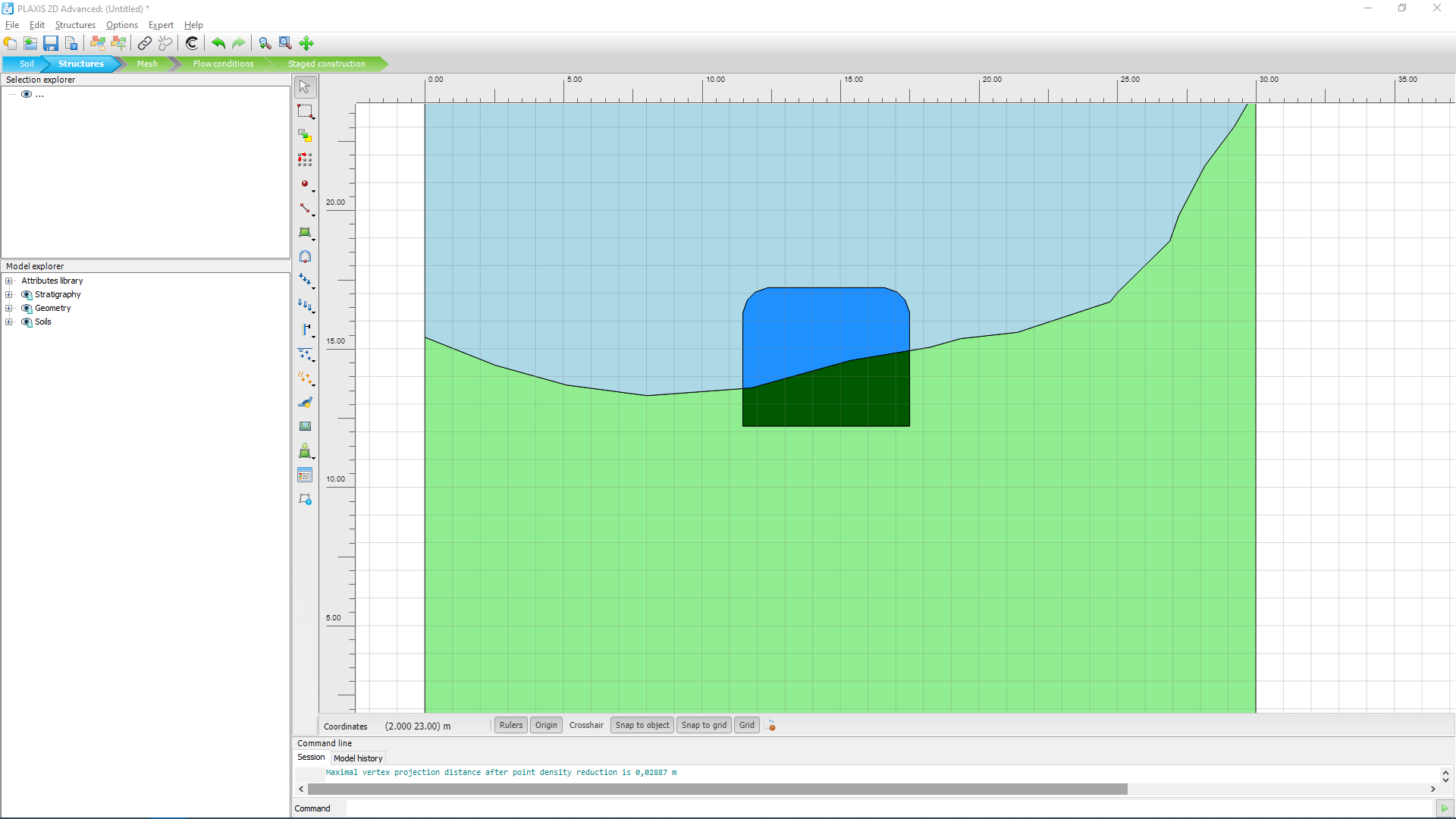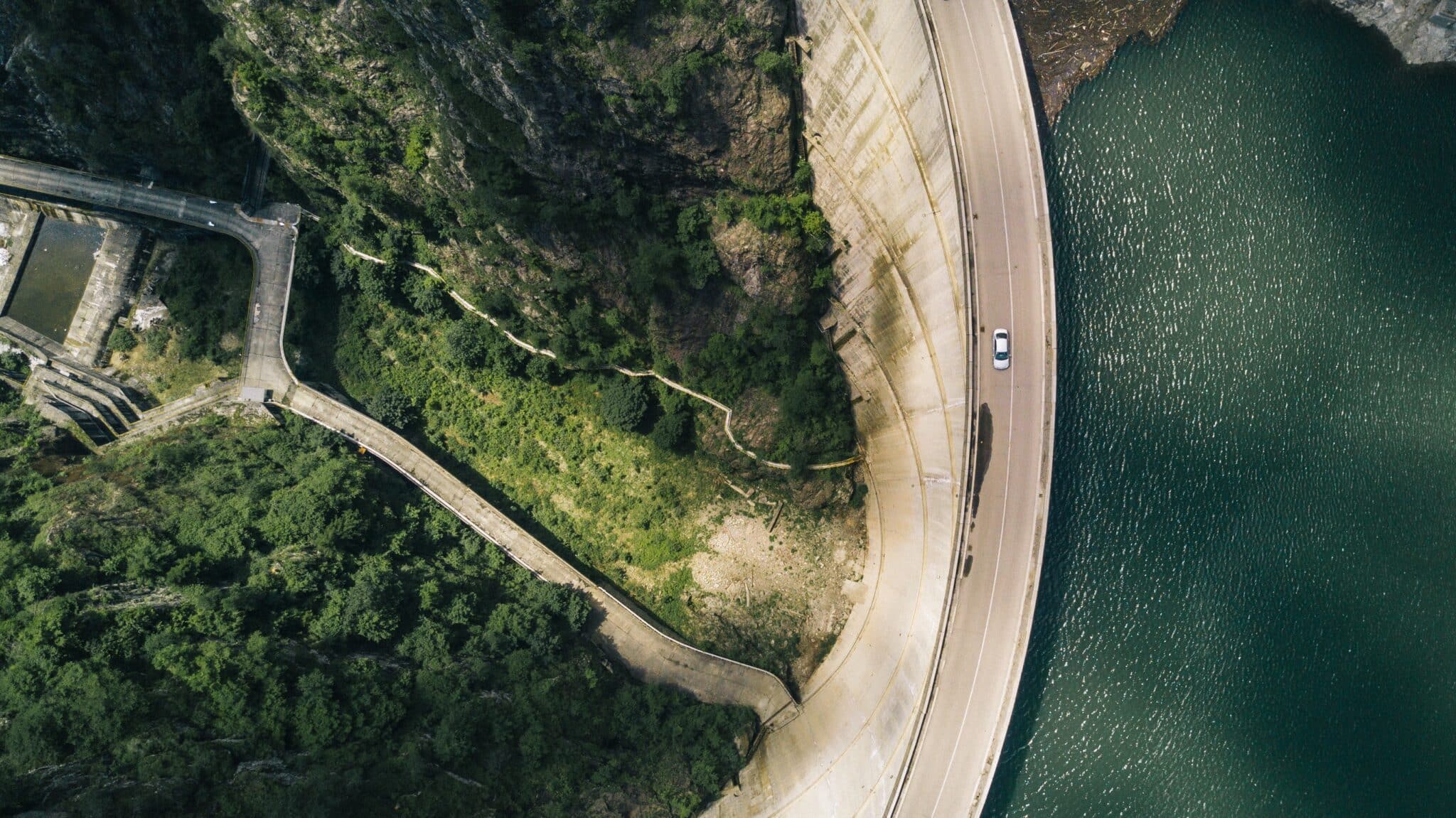Building infrastructure such as roads and tunnels is a complex process, but PLAXIS 2023.1 makes it easier and more efficient by incorporating geological data to design and build infrastructure that can withstand geological hazards. The new release integrates PLAXIS with Seequent’s subsurface digital twins, providing improved workflows and tighter integration for engineers between geological modelling and geotechnical analysis.
Engineers can now use PLAXIS 2D to connect Leapfrog cross-sections from Seequent Central with their design project, giving them access to a verified single source of truth for geological data and allowing the PLAXIS analysis to be updated with subsequent changes to the geological model.
To begin, engineers can create a 3D geological model using Leapfrog Works or Leapfrog Geo, which incorporates and interprets digital site investigation data. Once complete, the 3D geological model can be sliced into cross-sections and published to Central. Seequent Central helps you manage, track, and collaborate around Leapfrog engineering geology models and geotechnical documentation in a single, accessible environment.

In PLAXIS 2D, the user selects the relevant server, project, and latest published data and then chooses one of the available cross-sections. The application downloads the cross-section data and opens the import dialog window to show the polygons that will be imported. Once accepted, the geometry is inserted into the project, and the user can then add structural elements and loads to the PLAXIS model as usual.

The new Central icon on the main taskbar reflects the status of the geometry inside PLAXIS. PLAXIS is notified by Central if someone publishes a new instance of the Leapfrog project into Central. The user can then verify if there are any geometric changes to their cross-section and can choose to reimport the data if so. This ensures that the latest geological information is used in the infrastructure construction project, saving time and reducing errors.

With PLAXIS 2023.1, engineers can seamlessly incorporate geological data to improve their design and construction. The new features streamline the construction process and enhance collaboration capabilities, providing engineers with the tools they need to build infrastructure that can withstand geological hazards.
“As geotechnical engineers, we are constantly working to bridge the gap between geological data and engineering design. PLAXIS 2023.1 with Leapfrog interoperability enables us to seamlessly integrate geological data into the geotechnical design process, creating a more efficient and reliable infrastructure construction process.”
Paul Grunau, Senior Vice President, Geotechnical Solutions





